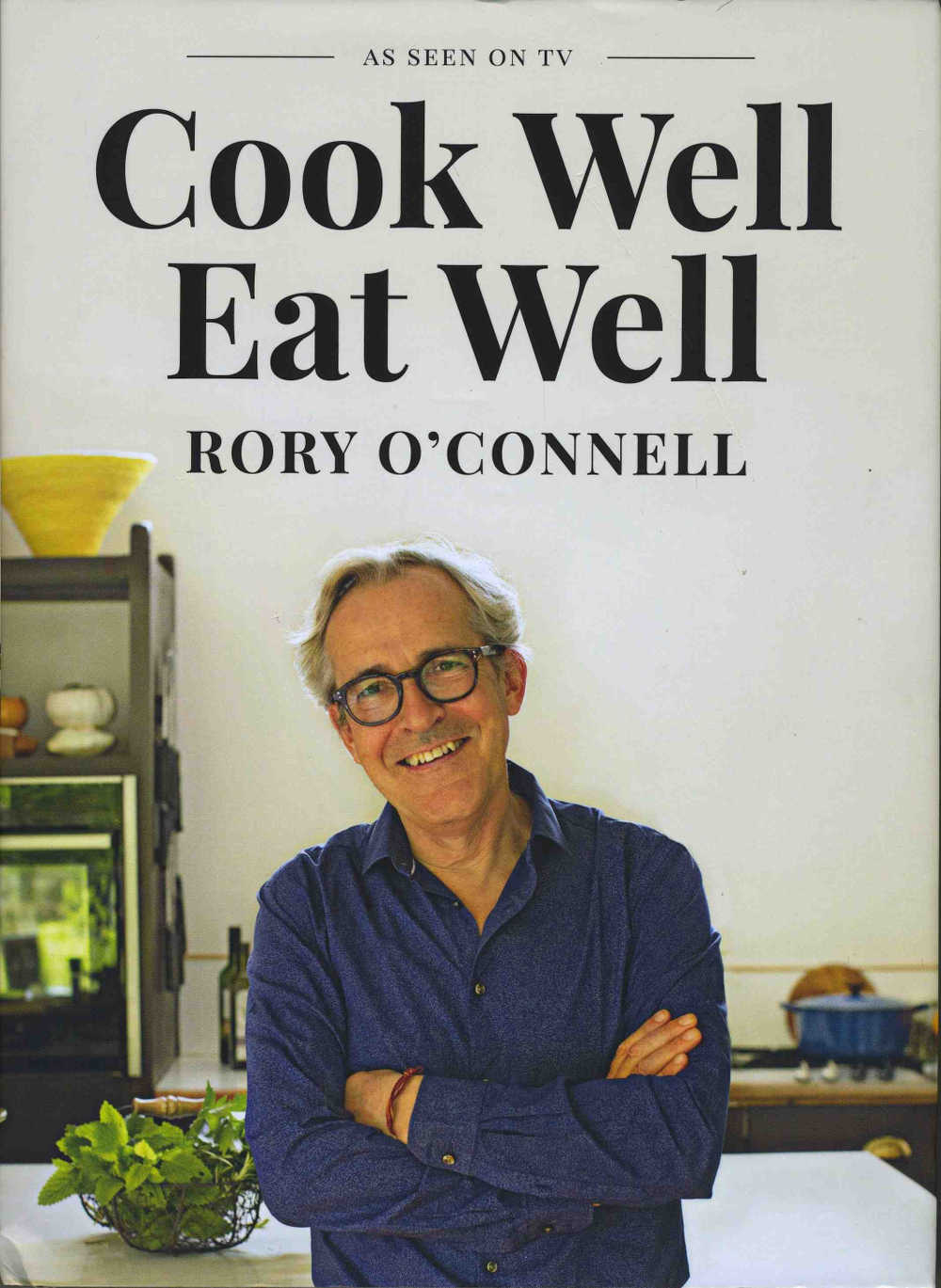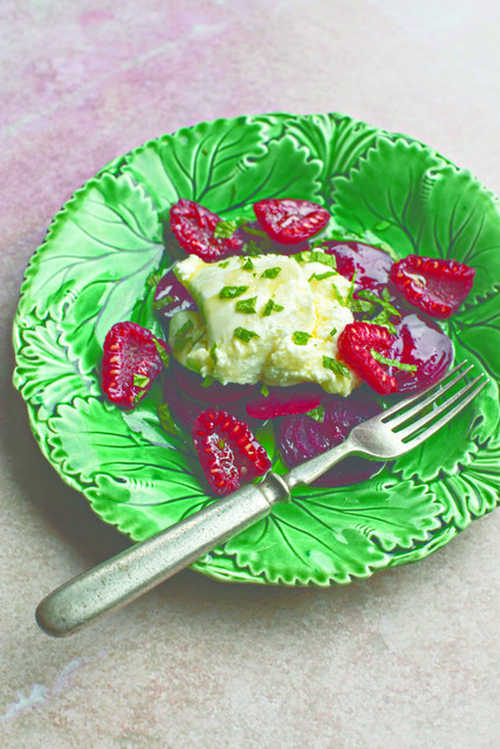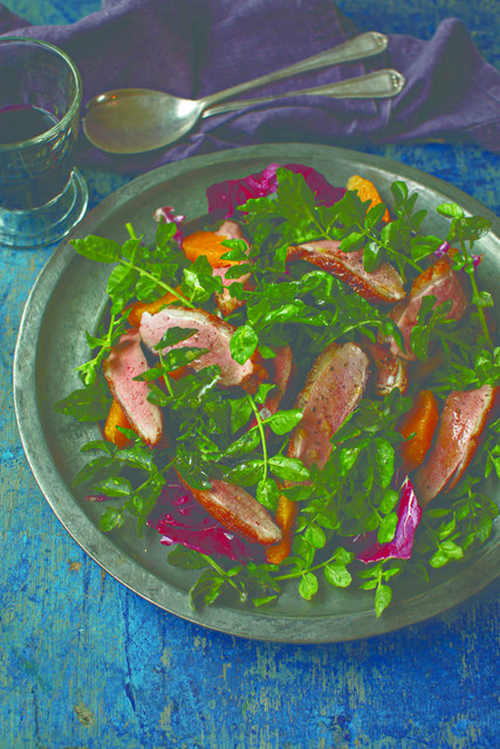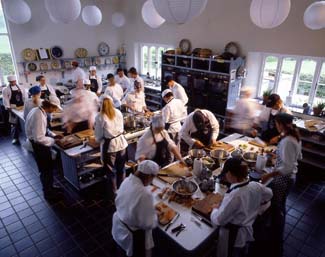The Darina Allen Column

This month Darina talks about Rory O’Connell’s new book, Cook Well Eat Well
I love Rory O’ Connell’s new book, sounds a bit soppy but I‘m a big fan of my brother’s food, simple beautiful and delicious – Rory and I started the Ballymaloe Cookery School together in 1983 and his first book Master It, published in 2013, was long overdue. Since then he has gained a loyal and growing fan base, both for his TV programmes and his much anticipated book number two Cook Well Eat Well.
I also love that now, people religiously ask if I am Rory’s sister instead of the other way around – long, long, overdue recognition.
Rory is a natural teacher and everyone loves the way he takes the mystery out of cooking and gently nudges us all to be a little adventurous. This book answers a frequently asked question about how to put a nicely balanced meal together “and what do I serve with what”?
Almost all the meals in Cook Well Eat Well are three courses. Rory sometimes suggests vegetables or a salad to serve with the meal, some of the recipes can be used over multiple seasons with a simple tweak of an ingredient to suit the time of the year you are cooking in.
Rory’s starting point is always the freshest local food in season; he reminds us that it’ll be at its best and least expensive then and much easier to transform into something yummy, delicious and properly nourishing. Rory has the added talent of being able to effortlessly make each and every plate look beautiful. Cook Well Eat Well is published by Gill Books (hardback, €24.99); here are a couple of recipes to whet your appetite.
RECIPES:

Rory O’Connell’s Beetroot and Autumn Raspberries with Honey, Mint and Labneh
Beetroot and raspberries taste very good together and the labneh adds the savoury note. Labneh, a simple dripped yogurt cheese, is very easy to make, though you do need to start the process the previous day or at least early in the morning if you are serving it for dinner. There are many uses for labneh, and once you make it for the first time you will probably wonder why you never made it before. Search out full-fat thick organic yogurt for a rich and creamy result.
Serves 4
2 medium beetroots, about 250g in total with tail and 3cm of stalk attached
Sea salt and freshly ground
Black pepper
Pinch of caster sugar
24 fresh raspberries
20 small fresh mint leaves
Labneh
500g full-fat natural yogurt
1 tablespoon extra-virgin olive oil
Dressing
3 tablespoons extra virgin olive oil
1 tablespoon lemon juice
1 teaspoon honey
1. To make the labneh, take a double thickness square of clean muslin or a fine linen glass cloth and place it over a sieve sitting over a bowl. Add the yogurt and olive oil and tie the four corners of the muslin to make a knot. Secure the knot with some string. You now need to hang the tied muslin bag by the string over the bowl to allow the whey in the yogurt to drip off for at least 8 hours, leaving you with a soft cheese. I hang the bag from a cup hook attached to a shelf and that works perfectly. If that
all sounds too complicated, just sit the muslin bag in a sieve over a deep bowl and that also will do the job quite successfully. When the whey has all dripped out, simply remove the muslin and chill the cheese, covered, until you are ready to serve it. It will keep in the fridge for three or four days.
2. Rinse the beetroots under a cold running tap, being careful not to break off the little tail. Place in a saucepan and cover with cold water. Add a pinch of salt and sugar to the water. Bring to a simmer, cover and continue to simmer until the skin rubs off the beetroots easily when pushed. This can take anywhere from 30 minutes for fresh new season beetroots to 2 hours for older beets, so it is impossible to give an absolute time. The cooked beets should be very tender all the way through.
3. Peel off the skin and any remaining stalk and cut off the tail. The beets can be prepared up to this point hours ahead or even the previous day.
4. To make the dressing, whisk the olive oil, lemon juice, honey and some salt and pepper together. Taste and correct the seasoning.
5. To assemble the salad, slice the beetroots very thinly (I use a mandolin for this) and divide between four serving plates (the salad can also be assembled family style on a large flat platter and brought to the table). Cut some of the raspberries in half lengthways and some in cross-section slices and scatter over the beetroots. Whisk the dressing well and spoon some of it on. Place a dessertspoon of labneh in the centre of each plate. Scatter on the mint leaves and a final drizzle of dressing and serve.
Taken from Rory O’Connell’s Cook Well Eat Well published by Gill Books

Rory O’Connell’s Grilled Duck Breast with a Salad of Oranges, Watercress and Radicchio
Duck and oranges are a classic combination of flavours, but here the emphasis is on a lighter result rather than the rich sauce one normally expects. Peppery watercress and bitter red-leaved radicchio are a lively foil for the richness of the meat. A selection of salad leaves could replace the ones I have suggested, but including some bitter leaves makes all the difference to the balance of the finished dish. The vinaigrette used to dress the salad leaves also becomes the sauce, so the overall effect is somewhat refreshing. I like to serve a crisp potato dish to accompany, such as a pommes allumettes or rustic roast potatoes. I think two large duck breasts, when being served with accompanying vegetables and potatoes, are sufficient for four people, but you will know what is needed at your table.
Serves 2–4
2 oranges
Pinch of caster sugar
3 tablespoons extra virgin olive oil
1 tablespoon lemon juice
Sea salt and freshly ground black pepper
2 large duck breasts
2 handfuls of watercress, washed and dried
2 handfuls of radicchio leaves, washed and dried
To Serve: Pommes allumettes or rustic roast potatoes with balsamic butter
1. Preheat the oven to 100°C.
2. Zest one of the oranges with a Microplane or on a fine grater. Carefully segment both oranges and sprinkle with a pinch of sugar. Mix the orange zest with the olive oil, lemon juice and salt and pepper to make the vinaigrette. Taste and correct the seasoning. Add the oranges to the vinaigrette and give them a gentle stir.
3. Place a cold grill pan on a medium heat and immediately put the duck breasts on the cold pan, skin side down. This seems like such an odd thing to do and contradicts most of the normal rules of grilling meat, but it works quite brilliantly, as while the skin is slowly crisping, the liquid fat renders out of the duck. Save all that duck fat for roasting potatoes and vegetables – it will keep covered in the fridge for months. Cook the duck on that medium heat until the skin has become crispy and a rich deep golden colour. This takes about 10 minutes. Turn over and finish cooking the duck on the other side for about 7 minutes more. By now the centres of the breasts should be pink, which is the way I like to serve them. I don’t like duck served rare as I find it to be tough. Rest the cooked duck breasts in the low oven for at least 5 minutes but up to 30 minutes – the juices will be more evenly distributed through the flesh after resting. I put a small plate upside down sitting on top of a bigger plate and sit the breasts against the sloping edges of the upside-down plate. This way, any juices that run out of the duck breasts will be saved, and equally importantly, the meat will not be stewing in its own juices.
4. When ready to serve, assemble the ingredients on a large hot serving dish or individual plates. Toss the leaves in just enough of the well-mixed vinaigrette to make them glisten, then divide between the hot plates. Carve the duck breasts into neat slices and scatter through the leaves. Arrange the orange segments through the salad leaves and duck slices and drizzle on the remaining vinaigrette. I like to quickly reheat any of the cooking juices from the resting duck and add those as a final lick of flavour. Serve immediately with the pommes allumettes or rustic roast potatoes on the side.
Taken from Rory O’ Connell’s Cook Well Eat Well published by Gill Books
---
'30 Years at Ballymaloe' - Bord Gáis Avonmore Cookbook of the Year 2013
Good Food Ireland Cookery School of the Year 2012/2013
***
 Once again, the Ballymaloe Cookery School in East Cork has a great programme of cookery courses for all interests and abilities running throughout 2017. Ranging from a relaxing visit to sit in on an afternoon cookery demonstration to a week long ‘Intensive Introductory Course’.
Once again, the Ballymaloe Cookery School in East Cork has a great programme of cookery courses for all interests and abilities running throughout 2017. Ranging from a relaxing visit to sit in on an afternoon cookery demonstration to a week long ‘Intensive Introductory Course’.
Sitting in the middle of a 100 acre organic farm the Ballymaloe Cookery School provides its students not only with a life skill learnt under the expert tutelage of their very capable teachers but also a place to relax and unwind from the stresses and strains of normal everyday life. The cottage accommodation available onsite for residential courses consists of a collection of delightful converted outbuildings which have been transformed over the years by the Allens, and other accommodation is available locally for the short courses.
www.cookingisfun.ie





There are currently no comments
Leave a comment
Not a member? Register for your free membership now!
Or leave a comment by logging in with: